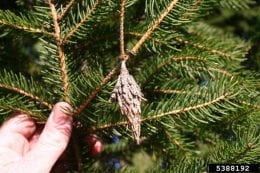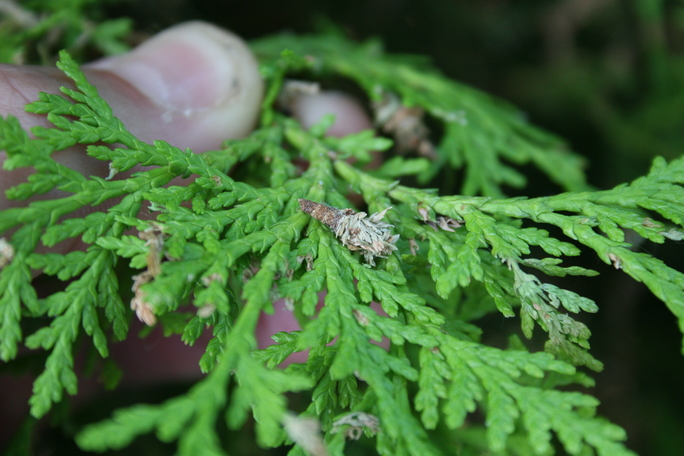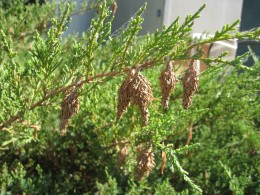Article derived from KSRE News Story: Now is the Time to Scout for Bagworms
Patience and persistence is key when trying to manage bagworms. Begin scouting in early May, and depending on weather conditions – through early summer.
Once caterpillars emerge, they begin feeding on the host tree or shrub, creating their protective bags. In addition to emergence over time, young bagworms can ‘blow in’ – called ‘ballooning’ – from neighboring plants on silken threads, which increases the importance of treating multiple times during the growing season. Watch both conifers and deciduous trees and shrubs. Although defoliation of deciduous trees and shrubs don’t typically affect long-term health of trees and shrubs, extreme defoliation of conifers can cause stress or kill conifers outright.

Hand removing and destroying bagworm bags is an option for smaller infestations. For larger infestations, the bag provides protection from insecticide treatments, so it’s important to apply applications when the bagworms are young. Apply insecticides weekly when young bagworms are present, up to 5 weeks. Treat windbreaks, Christmas trees, and ornamental landscape trees as soon as bagworms are present to prevent bagworms from causing substantial plant damage. Thorough coverage is important, including penetration into the interior plant canopy and upper branches.

Many insecticides are labeled for bagworms, but timing of application and thorough coverage will ensure the effectiveness of insecticides in managing bagworms. When bagworm caterpillars are small (1/8 to 1/4 of an inch long), products containing Bacillus thuringiensis subspecies kurstaki (Btk) or spinosad as the active ingredient can be effective. These insecticides have minimal direct impact on beneficial insects compared to broad-spectrum insecticides, which could lead to outbreaks of spider mites or scale insects that can cause damage to treated trees and shrubs.
If insecticides are not applied when bagworm caterpillars are small (1/8 to 1/4 of an inch in length) then broad-spectrum insecticides, including those containing malathion, acephate, or cyfluthrin as the active ingredients can be applied. Be sure to read the product label and follow directions.
For more information on controlling bagworms, reference the publication, Bagworm: Insect Pest of Trees and Shrubs, written by Dr. Raymond Cloyd.




